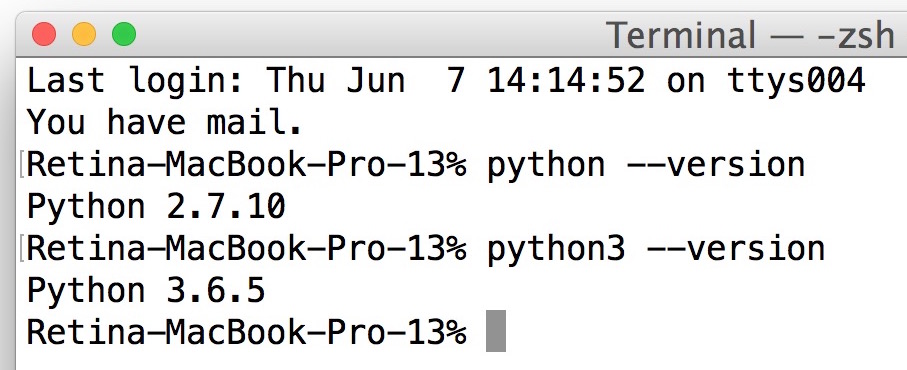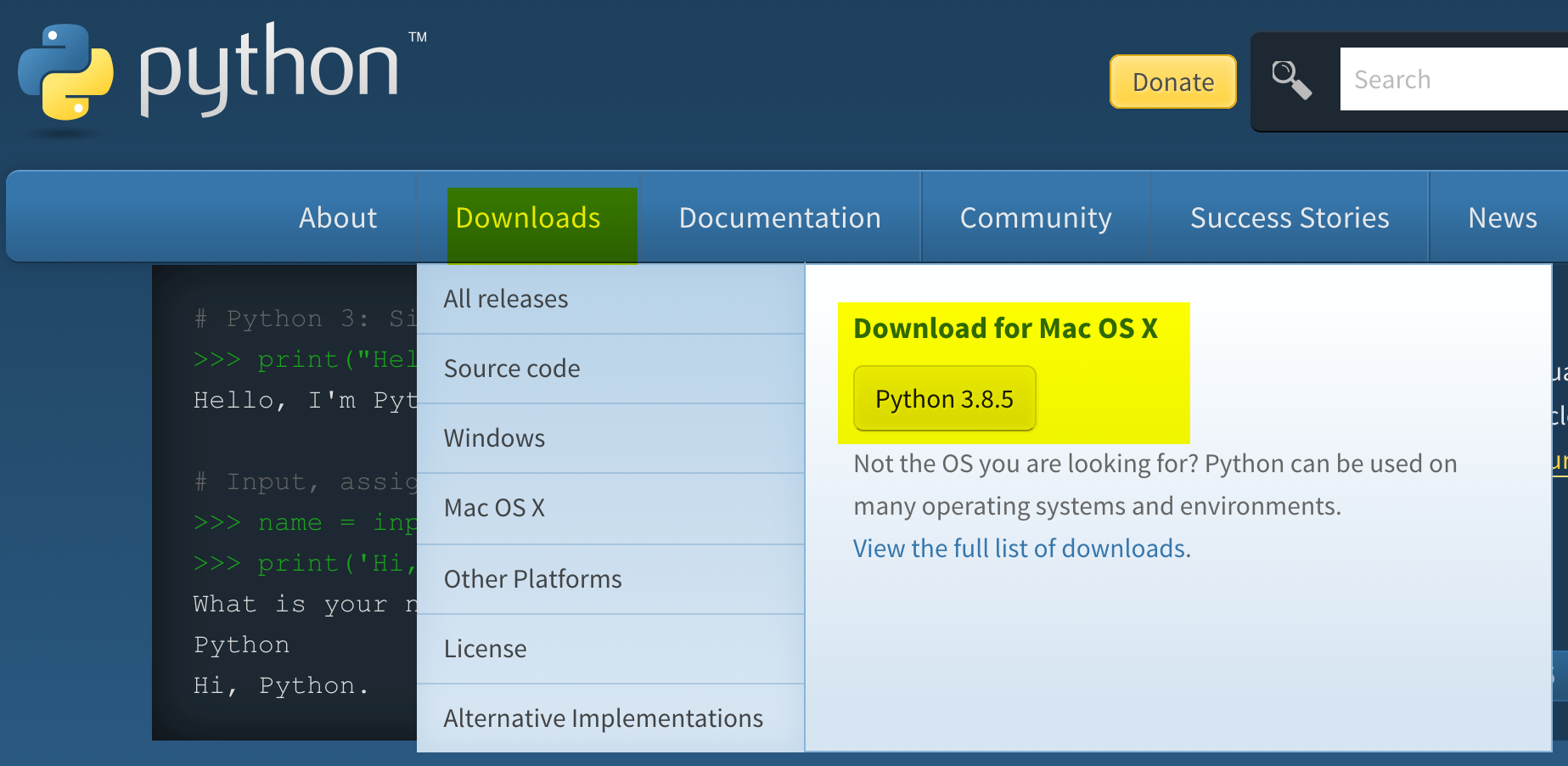

- #Update python mac command line how to#
- #Update python mac command line install#
- #Update python mac command line update#
The article indicates that the unix equivalent.
#Update python mac command line update#
This software update' command was issued on my machine: softwareupdate -l Software Update Tool Finding available software No new software available. With this setup, you'll be able to keep your system macosx python and switch to whatever new version of python you want available through pyenv. This example of Python command line arguments can be illustrated graphically as follows: Within the Python program main.py, you only have access to the Python command line arguments inserted by Python in sys.argv. I am accustomed to updating systems with sudo apt get update and would like to ensure MacOS security updates are installed from the command line.
#Update python mac command line install#
sudo apt update sudo apt install python3.9 Then, using the commands below, you can search the versions of your new and current Python installations: This command will show you the following version of python installed in your system sudo python -version 2.x.x sudo python3 -version 3.8. Run this command: pyenv global 3.9.2 Again, you can replace 3.9.2 with whatever the latest version is. This command is used to update Python package.

#Update python mac command line how to#
Note: you may need to create a new shell or reload your bash_profile in your current shell for the pyenv initialization to do its thing (set up shims). How to Set a Version of Python to Global Default (Bash or ZSH) You can set the latest version of Python to be global, meaning it will be the default version of Python MacOS uses when you run Python applications. Now install some python using pyenv and then switch to it with the pyenv local command (you can see all your versions with pyenv versions). If command -v pyenv 1>/dev/null 2>&1 then Once you have pyenv installed, update your. It means we have to remember to check the website and download the new files since Python doesnt include a command-line way to update.Install homebrew if you don't already have it and use it to install pyenv with brew install pyenv.The pyenv repo is pretty detailed on how to install for different systems and what it's actually doing, but here's the basic steps for mac: This avoids you having to put the current Python installation into PATH yourself. This makes it available from the PATH, so you can automatically run it from any shell just by using py instead of python as the command. Modify your shell environment ( PATH) with shims so that when you do pyenv local 3.8.1, calling python will invoke the new interpreter instead of your system python. Current Python 3 installations come with the py.exe launcher, which by default is installed into the system directory.Doing pyenv install 3.8.1 will install python 3.8.1 under ~/.pyenv/versions/3.8.1. Install different python versions under some directory.Essentially, pyenv can do two key things for you: I recommend using pyenv to manage your local python versions (both 2.x and 3.x) instead of installing new versions directly with homebrew or building new python versions from source manually.


 0 kommentar(er)
0 kommentar(er)
